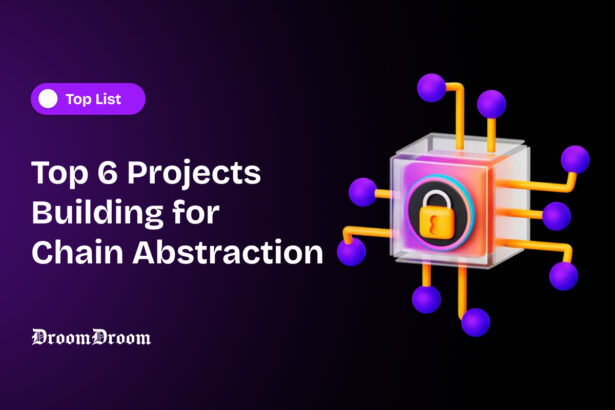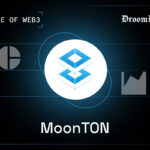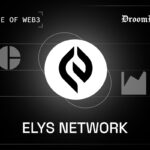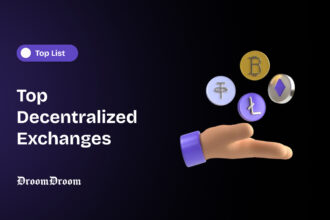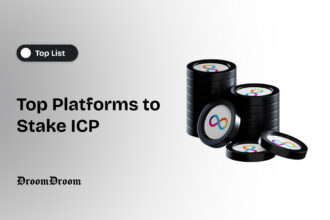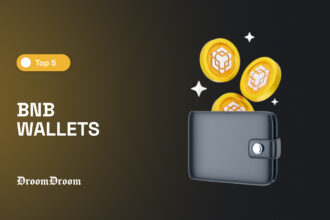Chain abstraction has been a hot topic in the crypto industry since last year. Recently, it has ascended to the forefront due to the rapid increase in chains and the resulting degradation in crypto user experience due to account and liquidity fragmentation.
- Exploring the Vanguard of Chain Abstraction
- Top 6 Projects Building for Chain Abstraction
- Arcana Network
- Unified Wallet Balance
- Gas Fee Abstraction
- No-Learning Curve
- Developer Friendly Environment
- Improved Liquidity Management
- Decentralization and Security
- NEAR Protocol
- Socket Protocol
- Across
- Everclear
- Particle Network
- Conclusion
Put simply, chain abstraction allows users to engage with multiple networks transparently – as if they weren’t interacting with blockchains at all. Whether it’s Ethereum or (insert your favorite chain), the technical specifics are abstracted away for a smooth, uninterrupted experience.
In this article, let’s explore six leading projects building for chain abstraction: Arcana, Near, Socket, Across, Everclear (prev. Connext), and Particle.
Exploring the Vanguard of Chain Abstraction
The leitmotif of many projects building for chain abstraction is to integrate the next billion users into the digital economy. At present, users constantly need to switch between different chains, manage an increasing number of tokens, and interact with third-party protocols.
The ideal experience for the next billion users is one where the mechanics of crypto are completely abstracted away – users should be able to transfer money to their family, continue building up their savings, receive their salaries, or repay a loan, with no worry about which chain they’re connected to or which token they’re using to deposit in a vault.
The solution? Chain abstraction.
The biggest challenge in Web3 really is adoption. Web3 people seem to be building for Web3 people. People who understand what is chain, gas fee, wallet and the like. What is required is something where the Web3 part or the blockchain part is actually transparent.
While the customer should get all the benefits of Web3, they should not have to undergo the need to understand web3 engineering. Chain abstraction is a very important step towards that.
Ajeet Khurana, founder of Reflexical, points out a key hurdle to widespread Web3 adoption.
Top 6 Projects Building for Chain Abstraction
The pursuit of a seamless, unified experience across disparate blockchains is driving a wave of innovation, with a diverse array of projects building for chain abstraction, , each offering unique approaches to this complex challenge. Let’s explore some of these pioneering efforts and their unique approaches.
Arcana Network
Arcana Network takes a fundamentally unique chain abstraction approach that focuses on the user experience, addressing the prevalent issue of assets and account fragmentation across multiple chains.
Arcana Network was founded to address the complexities and barriers of blockchain interactions. From a simple Auth SDK that creates non-custodial wallets via social login to a Gasless SDK that manages transactions without requiring direct gas fee payments by users, they focus on abstracting the complex process for users.
Its Chain Abstraction Protocol, powered by modular Layer 1 architecture, simplifies interactions across multiple blockchains by providing a unified interface for users with their “Unified Wallet” technologies.
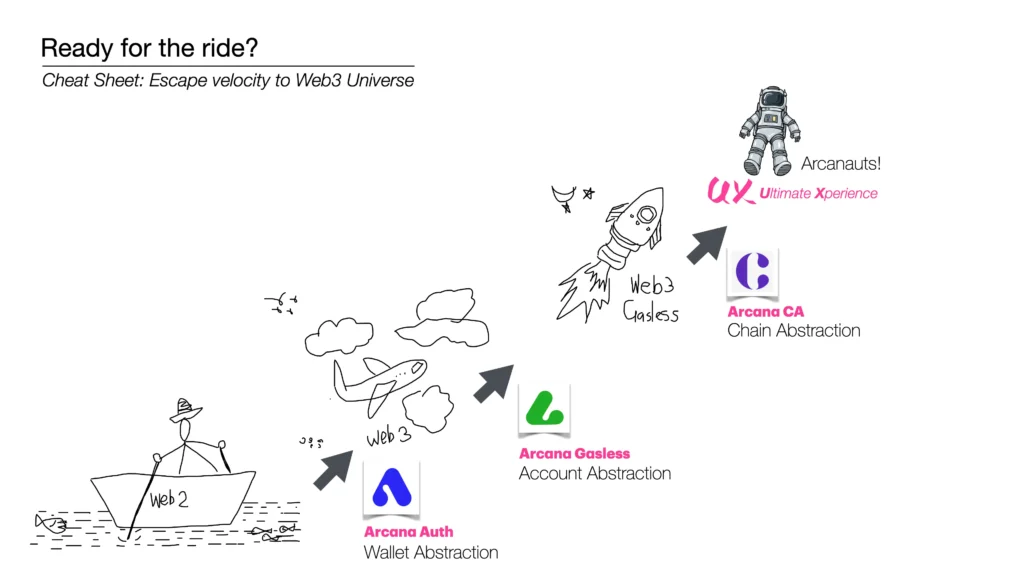
Arcana Network addresses various aspects of chain abstraction including account management, gas payments, liquidity and transaction settlement. Here’s how Arcana addresses the problem:
Unified Wallet Balance
Users enjoy a consolidated view of their assets across blockchains, akin to managing funds in a single bank account irrespective of currency type in the web2 world. And you can spend your money in any country (any chain) directly from this unified account.
Arcana allows users to interact with different dApps on different chains without creating new redundant accounts or acquiring new tokens, eliminating the need for manual swapping or bridging.
Gas Fee Abstraction
Arcana abstracts away the complexities of managing fees on different chains without needing to possess native tokens for each specific blockchain. The network handles this behind the scenes, allowing for a seamless transaction experience. Automatically funds the required gas fees required on various chains.
No-Learning Curve
One of Arcana’s biggest USPs is that users can use their existing EOA wallets to experience chain abstraction, without having to move to a new account system such as smart contract wallets, which come with onboarding friction and higher gas fees.
Video Demonstrating Cross-Chain Transfers without Bridging, with Arcana Wallet.
Developer Friendly Environment
With a single codebase, developers can deploy applications that operate across all supported chains. This results in simplifying development, enhanced interoperability and broadening the applications’ reach.
Improved Liquidity Management
Arcana Network manages liquidity through its network of vaults and solvers/liquidity providers which aggregates liquidity from both on-chain and off-chain sources. It uses liquidity pools that are not locked to a specific chain, making liquidity available across all chains. The network tracks all user spends and collections, allowing it to net transactions and rebalance liquidity efficiently.
Undoubtedly this enhances capital efficiency, minimizes redundant liquidity and bridging costs.
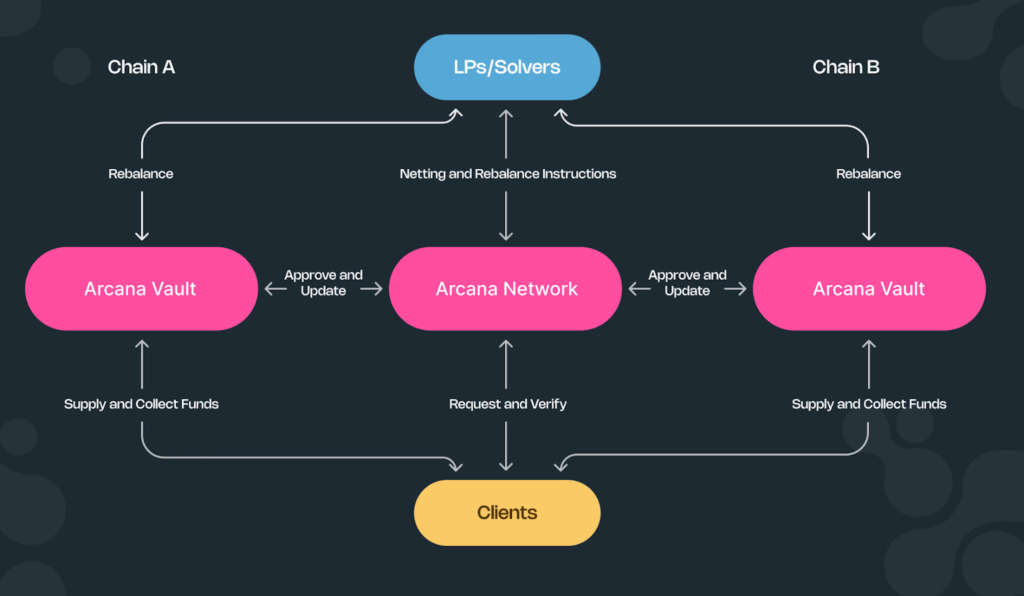
Decentralization and Security
Leveraging Multi-Party Computation (MPC) and Distributed Key Generation (DKG), Arcana ensures that security and decentralization goes hand in hand without compromising on UX.
NEAR Protocol
NEAR Protocol is a Proof-of-Stake Layer 1 blockchain designed to make dApps accessible to a mainstream audience. They achieve this by abstracting away the complexities of blockchain interactions by integrating–
- Smooth onboarding with NEAR Accounts
- Secure transactions through Chain Signatures using MPC
- Execution of user intents across different chains by Intent Relayers
What are NEAR Accounts?
Unlike traditional blockchains that use alphanumeric public key hashes, NEAR allows accounts to be identified by human-readable names, such as nathan.near. This along with NEAR’s Chain Signature simplifies user interactions and eliminates the need for multiple accounts.
When a NEAR account is created, the user’s private key is generated using MPC so as to enable independent parties to perform shared computations on private information without revealing secrets to each other.
MPC uses two key participants here, indexers and relayers to sign transactions between several blockchains, without requiring the account to maintain or even own the private keys of those external networks.
Gas Abstraction with NEP-366
NEP-366 introduced meta transactions to NEAR that allow transactions to be executed without the user needing to hold the native token for gas fees. Relayers handle the transaction by attaching the necessary tokens to cover gas fees before submitting it to the network.
Socket Protocol
Socket Protocol claims to be the first chain abstraction protocol. It is an innovative solution designed to address the fragmentation issues that arise in a modular blockchain ecosystem through modular order flow auctions (MOFA).
What is MOFA? And How Does it Work?
MOFA is like an Uber service for blockchain transactions. It is a marketplace where execution agents, known as Transmitters, compete to execute user requests.
Let’s say you want to mint a new NFT on Ethereum, but you don’t want to deal with the complexities of gas fees, network congestion or waiting times. MOFA operates like an auction where the right to execute user requests is the item being bid on.
Transmitters with different roles (like, sequencers, validators, market-makers) evaluate your request and place their bids in the MOFA marketplace. They are essentially saying, “I can execute this request the fastest,” or “I can execute this request the cheapest,” based on their unique capabilities.
And you receive your minted NFT in your wallet without having to handle gas fees, network choices or any other technical details.
It is essential to note that Socket Protocol and MOFA exemplify chain abstraction, not cross-chain. This distinction is clearly outlined in their documentation, and it is crucial not to conflate the two.
| Cross Chain | Facilitates communication between different blockchains |
| Chain Abstraction | Entirely abstracts away the complexities of blockchain layers from users |
Simplifying User Interactions
In practical terms, users are only required to sign for their desired outcomes. Following this, a solver layer takes these signatures and ensures they are executed across the necessary blockchain environments to realize the user’s goals. This process significantly simplifies the UX. Instead of managing multiple transactions, including buying gas across various networks and connecting to different RPCs, users simply sign a single outcome.
MagicSpend++
MagicSpend++ advances the field of chain abstraction by building upon existing Account Abstraction standards to deliver a friction-less, gas-less transaction experience across diverse blockchains. Sharing a similar approach as Arcana’s Unified Wallet concept, MagicSpend++ introduces a Chain Abstracted Balance (CAB) which amalgamates a user’s assets from various blockchains into a single, unified balance.
Across
Across, one of the top projects building for chain abstraction, is an interoperability protocol powered by intents, making it the only production-ready cross-chain intents protocol.
For the uninitiated, intent-based design allows users to specify what they want to achieve (e.g., transfer assets) without dealing with the underlying technical complexities.
Chain abstraction, as we discussed above, is to create a seamless and unified experience for users by simplifying interactions across multiple blockchain networks.
While they are distinct concepts, they complement each other to create a more user-friendly experience. Chain abstraction is the ultimate goal, and intent-based design is one way to achieve it.
At its core, Across utilizes an innovative architecture that smartly separates the immediate transactional needs from the more labor-intensive processes of verification and settlement.
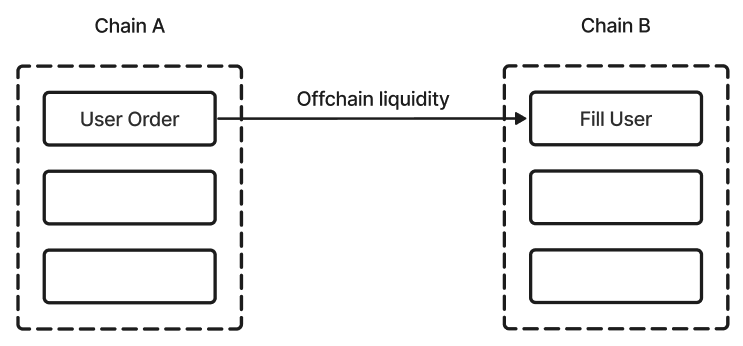
Across+ stands out as a cornerstone within the Across ecosystem, implementing the principle of chain abstraction through a sophisticated bridge abstraction framework. Designed for developers, Across+ enables the bundling of bridging and protocol actions into a single, seamless transaction. And so, it eliminates the need for users to manually bridge assets between chains to engage with specific decentralized applications (dApps).
The chain abstraction innovation, Across+, streamlines user transactions across multiple blockchains by integrating a “message field” that specifies intent and destination. A relayer then ensures this message reaches the correct blockchain, where a dApp’s handler function executes the specified actions, simplifying cross-chain interactions
Everclear
Formerly known as Connext, Everclear’s chain abstraction approach is the introduction of the first “clearing layer”. This layer, similar to how the Visa network functions, calculates and nets token bridge transactions. Netting allows solvers to offset their debts with each other, rather than needing to settle each individual transaction.
In fact, Everclear’s data reveals that, on average, approximately 80% of daily cross-chain capital flows are nettable which ultimately means that there is reduced need for processing individual transactions because a sizable number of transactions can be combined.

As you can see above, only one settlement needs to occur (party B paying 350 tokens to party C) instead of four.
Operational Efficiency
Everclear’s system effectively addresses the fragmentation issues commonly associated with current cross-chain transactions by providing a unified settlement system. This method not only accelerates settlement times but also enhances overall transactional efficiency.
Comparatively, Arcana Network utilizes a similar netting strategy to improve efficiency within their respective systems but in fundamentally different contexts.
Everclear uses netting for cross-chain settlements to reduce the number of transactions required between parties. This basically lessens the workload on the blockchain for faster settlement times.
On the other hand, Arcana focuses on netting within their vault system to manage user activities and liquidity across various blockchains. This particular netting helps optimize rebalancing instructions for LPs. So, improved efficiency and lower costs for users.
The core architecture of Everclear involves solvers/LPs, relayers and watchers to monitor fraud. Everclear optimizes the auction and verification of transaction batches by incorporating a customized Arbitrum Orbit rollup.
It focuses on user intents and so users simply express their intent for transactions like token swaps and Everclear’s system, through a competitive auction among solvers, ensures these are executed efficiently and cost-effectively.
Moving on to discuss the final, but certainly not the least, one of the top projects building for chain abstraction, Particle Network.
Particle Network
Particle Network champions a philosophy that envisions a blockchain ecosystem so user-friendly that the underlying complexities are completely obscured from the user. With the launch of Particle’s modular Layer 1 platform, it acts as both a settlement and coordination layer.
The network’s Wallet Abstraction services onboarded over 17 million users across 900 dApps, managing assets worth approx $2 billion across 56 chains. These users will transition seamlessly to the Layer 1 platform by functioning as Universal Accounts.
Universal Accounts
At the core of Particle Network’s strategy is the innovative concept of Universal Accounts. These accounts act as a unified interface and allow users to manage their identities and assets across various blockchains.
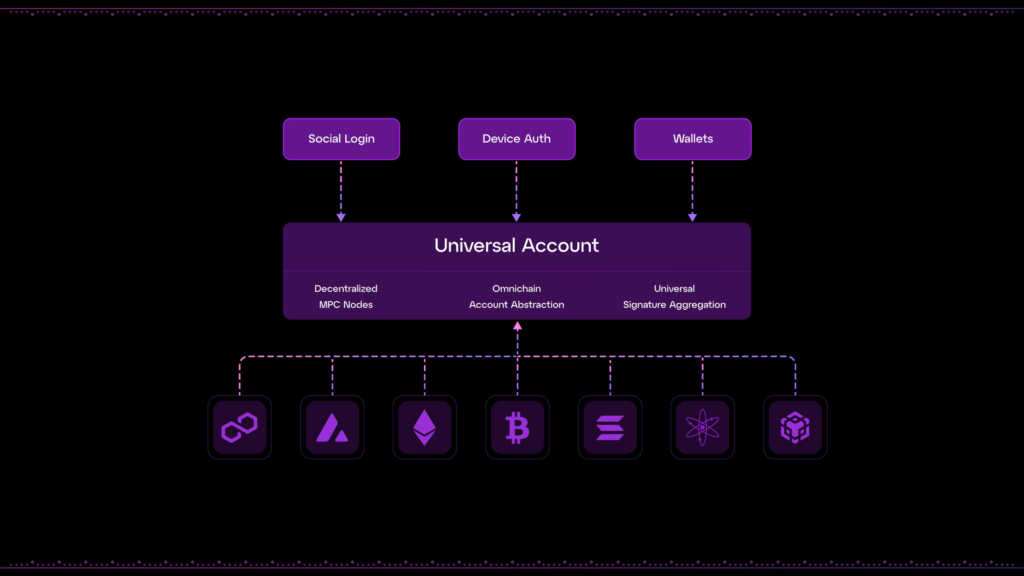
They basically eliminate the need to manage multiple accounts and wallets so that the user interactions and transactions across diverse networks are simplified.
User Centric Design
Echoing the user-centric approach of Arcana Network, Particle Network also prioritizes the consolidation of account, wallet and token management across multiple blockchains. With this feature, using blockchain technology feels as intuitive and straightforward as interacting with a single, unified platform.
Modular and Interoperable Architecture
Built on the modular and interoperable Cosmos SDK, Particle Network’s Layer 1 architecture allows seamless connections between various blockchain environments including Ethereum Virtual Machine (EVM), Bitcoin UTXO and Solana for a versatile and inclusive ecosystem.
Abstracting Technical Complexity
While Arcana Network focuses on abstracting gas fees, Particle Network extends it further to encompass other facets of blockchain interaction including managing liquidity across chains through Universal Liquidity.
Conclusion
In the 100+ multichain environment, the crypto UX is fragmented and complex with users facing challenges in managing wallets, interacting with dApps and handling assets across multiple blockchains.
Chain abstraction goes beyond linking accounts or enabling blockchain communication; it coordinates and manages transactions across chains for users to operate as if dealing with a single, unified account.
Each of these projects building for chain abstraction (like Arcana, Near, Socket, Across, Everclear and Particle) is contributing uniquely to simplify blockchain interactions to enhance the user experience.
The narrative of chain abstraction is here to stay with more projects emerging to solve similar problems through diverse approaches. And a unique aspect of this trend is the collaborative spirit among projects to coordinate and support each other’s developments for the common vision of making hundreds of blockchains more manageable.
